There are few things in life as important as the food we eat, but making sure that we guard the genes in our crops for the future is just as important. Plus, we take a look at some of the intellectual property issues surrounding our food, learn squid's surprising secret, and our gene of the month might be a mayor.
In this episode
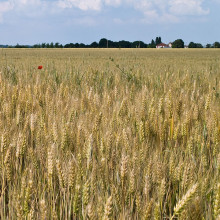
01:00 - Mike Ambrose - Saving seeds
Mike Ambrose - Saving seeds
with Mike Ambrose, John Innes Centre
Kat - Feeding the world's growing population is a big challenge, and it's important that we take care of the varieties of crops that are grown as food. But at the same time, we also need find varieties that can withstand new challenges, such as pests and climate change. I spoke to Mike Ambrose, manager of the Germplasm Resources Unit at the John Innes Centre in Norwich, which is basically a seed bank packed full of all kinds of crops, to find out how resources like this could help to keep food on the table in the future.
Mike - My role at the John Innes Centre is to manage the Germplasm Resources unit which is a seed bank in other words. These represent the collective agricultural history and research history of arable crops in the UK, primarily cereals and legumes. These are large collections of seed which has been amassed to underpin principally research and breeding. They do go back in time so we've got representatives of early crops from UK - wheat, barley and oats from different regions across the UK as well as other parts of the world.
Kat - Now, when I look at say, a field of wheat or a field of barley or something, it looks pretty much to me like any other field of barley. But presumably, there are differences in say, different species or strains of these crops and they're genetically different. How do you go about collecting and preserving some of that diversity?
Mike - Well, for cereal crops, it's fortunate that they're mostly inbreeding. So, if you get hold of a variety, and you keep it from outcrossing, you can keep it as a genetically fixed line.
Kat - So, if you just grow it in one field and you harvest those and then plant them again, and keep going, you'll just get that particular genetic crop.
Mike - Yes, you'll get that crop. Now, a crop isn't 100 per cent inbred. There's still a little bit of what they call residual variation there. But basically, it will conform to the description of that type. We can actually go back through some of the early descriptions - colour etchings of cereals from the late 1800s and match them against the same varieties that we have today and they're absolutely spot on.
Kat - So, I could be eating a loaf of bread made with exactly the same kind of wheat, genetically the same, as could've been grown 100 years ago.
Mike - Pretty much, yes.
Kat - What about some of the more wonderful things like the heritage vegetables? We hear all about this kind of strange vegetables that are coming out and turning up in our shops or in farmer's markets. Are there similar things for cereal crops?
Mike - There are. They're not so generally well-known, but it's exactly the same thing. people have maintained these old forms purely out of interest. In some cases certainly in the cereals, they had to earn their keep. So, when we talk about heritage material still being used, it's for a purpose. So, you've got particular crops of barley or oats or even wheat that are grown for purposes. So for instance in Scotland, certain types of barley are well at better adapted for growing under the windy wet conditions there than recommended varieties today. In the UK, in south-western England and east of England, you got to think about all the thatching materials, all the straw that's used. The long strawed wheats are the old fashion types that are grown. They're grown specifically by some farmers that have accessed them from our collections for their long straw to maintain the heritage of thatched buildings.
Kat - Say, you did decide that you wanted to take one of these stored seeds and get it going again, like "Yep! I think we need this crop." How much would you need and how long would it take to get that, say, so a number of farmers could be sowing it?
Mike - We only keep relatively small samples, given that we've got over 45,000 different lines. the amount of any one of them is relatively modest. But you can over 2 or 3 generations of multiplication build up to a reasonable amount of seeds. So, we can fast-track it there are ways if we really need to, if something really important is discovered in the line, it can be put through to 2 to 3 generations a year, depending on whether it's a winter or spring type we can accelerate that process and get the seed multiplied up at a faster rate.
Kat - From a research perspective, how do you go about discovering what's in these seeds? What's useful in these different genetic lines that you've got?
Mike - There are different ways. You may be focusing on specific diseases. So, you might put it into infected soils or spray it with particular diseases to see whether it has any immunity. But you can also look at it genetically. So for instance, if you've got a particular disease-resistant gene that has been sequenced with the new technologies, you could look for variants in that sequence by just taking a piece of the leaf of DNA, extracting the DNA and searching for variants of it - that's called EcoTILLING. That's a very powerful and new technique. So for instance, if we have DNA resources of our collections, you can come along to it and probe for that allelic variation and within a few weeks, get an answer, which would've taken many years to establish by growing everything up and exposing it over its full cycle.
Kat - One of the hot topics at the moment is talking about things like food security and the changing climate and the environment. How do you see the role of what you guys do here in basically enabling us to have food for the future?
Mike - Well, the collections are incredibly important in that arena. These resources are the first port of call in many instances for researchers and breeders to look for those adaptive traits to cope with climate change and other stresses that are imminent and threatening.
Kat - Do you have a favourite in there? Do you have a favourite variety that you look at, "That is a nice barley"?"
Mike - Favourites, they come and go. There are. I mean, the collections are full of stories. Each individual line has its own story and it's a question of which ones are current at the moment. One that's playing out is a land race of barley, a UK barley and it's called Chevalier which has been knocking around since the 1830s. When barley really began to become improved in the latter part of the 1800s, there was a sort of line drawn under the old material. It wasn't well-adapted. It was consigned to the history books. But recently, there are researchers here that have been looking into these old forms that are well-adapted to growing in the UK. They may not have the disease resistance. Lo and behold! That particular line has two characteristics which have brought right into the focus. The first is, that it has some novel malting features - so in the malting process for beer. But also, is the fact that it has a new form of disease resistance to a disease called fusarium head blight which is increasingly a problem in the UK. So, that material has been fast-tracked. So, an old line is having a really renaissance.
Kat - It does sound like a fantastic resource that you've got with this seed bank. How can you get people to know about it? Is there any way that the public can maybe get hold of some of these seeds and try them out?
Mike - Well, we do put on growing demonstrations not just at John Innes but a few other events and I go and give talks. But we have over the last few years been supplying seed in a city school's programmes. It's easy for people to get hold of vegetable seeds from your garden centre, but how do you get hold of agricultural seeds? Not so easy. So, we put ourselves in the market place for providing samples of seeds for teachers to be able to grow out small plots of wheat or barley, or whatever else we have, so that the children get to see what the crop - what it looks like when it's growing, to get to harvest it, to get to process it and to eat it in the end. The more people that understand these processes and the more that you use the collections, it's for the better. They're there to be used.
Kat - That was Mike Ambrose from the John Innes Centre in Norwich.
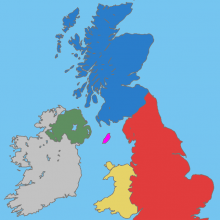
09:23 - Garrett Hellenthal - British Genes
Garrett Hellenthal - British Genes
with Garrett Hellenthal, UCL
Kat - Our genes can tell us a lot about where we've come from. Now a major new study published in the journal Nature has used genetic analysis to look at the ancestry of British people, showing that different parts of the UK seem to harbour their own distinctive genetic flavour and revealing where some of these groups might have come from. Study researcher Garrett Hellenthal, from UCL, told me more about the work.
Garrett - The aim of the study was to infer the genetic history of the UK. And so, what we did is we sampled some 2,000 individuals from across the United Kingdom. These individuals were selected in a very particular way. There's a requirement for each individual, all 4 of their grandparents had to be born within 80 km from one another. So, we try to get individuals that have been living in a region for a while so we can get a snapshot of older history and avoid recent migration. The aim of study - so, two major things that we did. One was to see if we can cluster individuals based solely on looking at their genetics and seeing if for example, individuals that were sampled from one part of the United Kingdom, are they more similar to each other than they are to individual sampled from another part of the United Kingdom and how does this correlate with kind of known boundaries and history. The second thing was to take the DNA of these same individuals and compare them to some 6,000 individuals from across continental Europe and identified different parts of the UK share matching DNA patterns with different parts of Europe. And if so, do those correlate with known migrations from Europe? Of all the migrations from Europe into the UK, which have kind of had the biggest genetic impact in the people of the UK today?
Kat - Tell me some stories. Tell me some stories about us. What have you found?
Garrett - Just looking at the UK itself, there are some fascinating stories just by comparing the DNA of individuals in the UK to each other. There was kind of a striking correlation that turns out with genetics and geography to the point where we can tell whether an individual came from Cornwall which is in the southwest of England versus whether they were sampled from one county over in Devon. Genetically, we can tell them apart which is quite surprising because geographically, those are quite nearby regions. In fact, the difference between the two, the groups seem to be separated largely among modern-day county borders which is another sort of interesting finding. But then at the same time, while you have this kind of very tight regional clustering across the United Kingdom which hadn't been shown before, there are some parts of the UK for example, central, south and eastern England, individuals sampled from across a very large swath of those areas all were genetically very homogeneous. We couldn't really tell them apart, suggesting that there had been quite a bit of movement and intermixing along those regions. And so then, when we try to take the DNA of these individuals and compare them to Europe to learn about why we're observing these sorts of pockets of genetics across the United Kingdom, we found that one of the bigger stories in UK history appears to be the Anglo-Saxon migrations. So, UK has a very storied history, lots of migrations. For example, the Romans occupied big parts of England for about 400 years, until about the 5th century. And yet despite that, they've built lots of walls, baths and other things that you can see across England today. But in spite of that, there seems to be very little genetic impact at all related to the Roman Empire as far as we can tell.
Kat - They didn't fancy us basically.
Garrett - Yeah, they didn't migrate here in large numbers. It is believed that they didn't really migrate here in large numbers. Perhaps it was difficult to convince people to leave the Mediterranean and come up to the UK. In contrast to that, after the fall of the Roman Empire, that kick started what were known as the Anglo-Saxon migrations around the 5th and 6th centuries. For those migrations, there's large scale migrations from places in modern-day Denmark and northwest Germany who settled into a big area within southeast England. It was unknown amongst archaeologists who debated amongst archaeologists and historians as to whether the Anglo-Saxons completely displaced the people that were there. So that if you looked at Englishmen today, basically, they'd be entirely Anglo-Saxon in heritage or whether they intermixed with the inhabitants that were there. And so, what our studies rule out was that they appear to have intermixed. If you look at an Englishman today on average in these regions this area of te southeast England, they have about 10 to 40 per cent of their DNA that seems to trace to these Anglo-Saxon migrations. The rest seems to be similar to other areas of the UK which we think of as the kind of pre-Saxon inhabitants.
Kat - One of the other peoples we know came to the UK are the Vikings. Tell me if you found any evidence of Viking blood in our history.
Garrett - Yes, we did in some parts. So, there were Norwegian Viking invasions and migrations. They came to Scotland in about the 9th century. Orkney Island, which is an island of the north part of Scotland, individuals there seem to have about 25 per cent of their DNA matches to individuals in modern-day Norway, suggesting a link that's most likely related to those conquests. In fact, Norway annexed Orkney for about 500 years, about until 1470 or so I think.
Kat - Out of all the parts of the country that you looked at, which are the ones that seem to have been most isolated and kept themselves to themselves over the years?
Garrett - The Welsh appear to be a group that seems to have been less impacted by these recent events, these recent Anglo-Saxon and Norwegian Viking migrations. They perhaps look the most similar to what we might think of as the original inhabitants of the pre-Saxon inhabitants. So, they seem to be quite successful at warding off these different invading factions for whatever reason, probably geographically for one thing.
Kat - And not mating with them.
Garrett - Yes, that's the key. Not intermixing, as they say, with these invading groups, yes.
Kat - So the differences that you're finding between people from different regions, do they mean anything? Does this mean that people in Cornwall have funny-shaped heads or something like that?
Garrett - So, as far as we know, the vast majority of any of the DNA that we looked at is neutral. I mean, it doesn't encode or affect any sort of physical traits or characteristics. What it most likely reflects is the fact that these two groups, for example, if you consider neighbouring counties that appear to be genetically distinct such as Cornwall and Devon as we see in the study. It seems to reflect that they've probably been somewhat isolated from one another, meaning they haven't intermixed relatively recently. What that means is if you're isolated, so this is the signature that you've been isolated, you might start to develop your own cultural traits. But it doesn't mean in any way that the genetics are driving those cultural differences. If anything, it's just sort of telling us that they appear to be isolated and hence, it's not surprising that they have their own minor cultural differences.
Kat - There's quite a lot in the news about immigration coming into the British Isles. Do you feel that when you look at the genetic history of the people who live here that this has been going on for many, many years?
Garrett - Yeah, that's right. One of the things that I found in my studies is that every group appears to be mixtures of other groups. So, we basically all descend from this sort of passing or mixing events, human populations clearly once we expanded across the globe, we didn't just stay put. We went back out again and intermixed. And so, you see these signals everywhere. It's a constant interaction amongst different groups and that's still continuing today and will for a very long time.
Kat - That was Garrett Hellenthal from UCL.
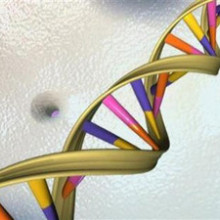
16:28 - Better genetic toolbox
Better genetic toolbox
US researchers have developed a more efficient, smaller tool for genetic engineering, effectively a pair of tiny molecular scissors that can snip DNA in specific places, publishing their work in the journal Nature. Called Cas9, it's based on a recently-developed system known as CRISPR, which was first found in bacteria but has since been used to selectively alter DNA in all sorts of organisms. One problem with CRISPR is that the components are relatively large in molecular terms, making it tricky to package it all into the kind of viral vectors that might be used to deliver gene editing technology into human patients to treat diseases caused by faulty genes.
The current CRISPR system works using the Cas9 gene from bacteria called Streptococcus pyogenes. After sifting through around 600 different bacterial species, the researchers found that the technique also works with a Cas9 gene taken from the bacteria Staphylococcus aureus, which is 25 per cent smaller than the Streptococcus version.
For now, genetic engineering using CRISPR and Cas9 is still at a highly experimental stage, but there are hopes that in the future - as long as it's safe - it could be a way of developing new treatments for people affected by genetic diseases.
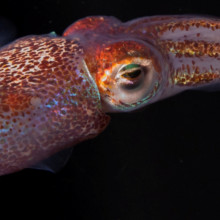
17:40 - Squid switch up messages
Squid switch up messages
Scientists have made a surprising discovery about squid, according to a new paper in the journal eLife. When genes are read, cells copy the information encoded in DNA to produce messages called RNA. This RNA is then used as the instructions to create proteins - the building blocks of the cell.
For a long time it was thought that RNA was a faithful copy of the DNA template, but it's now known that some of the letters in the RNA messages can be changed - a process known as RNA editing. There are examples of editing in many organisms, including humans, worms and fruit flies, but it's not thought to be a hugely widespread phenomenon.
Now researchers in Puerto Rico have discovered that squid edit their RNA on a massive scale, with around 60 per cent of their RNA being edited in the brain - corresponding to an incredible 57,000 sites that differ from the original DNA, compared to around 100 known sites in humans and 600 in fruit flies. The scientists think this might create more diversity in the proteins that are in the squid brain, helping the animals to quickly adapt to changes in their environment such as alterations in temperature.
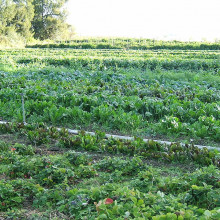
18:59 - Dominic Berry - Intellectual property
Dominic Berry - Intellectual property
with Dominic Berry, university of Leeds
Kat - Now it's time for an often-overlooked topic in genetics - the role of intellectual property, or IP. But while it's easy to see how trademarks and patents might apply to processed foods and brands, it's harder to understand the wider IP issues at stake around the food we eat.
To find out more, and particularly how IP is relevant to agriculture and the food we eat, I met up with Dr Dominic Berry, a researcher from the Centre for History and Philosophy of Science at the University of Leeds, at a bustling market in London. Before we moved indoors away from the noise, we took a look at some of the delicious-looking fruit and veg on the stalls - I wanted to know if people realise that their is intellectual property locked up in these humble carrots and lettuces.
Dominic - They might not seem that way and they might seem a bit bizarre if next time you go out shopping to start looking at fruit and veg in these sorts of terms. Basically, when you're looking at a whole bunch of fruit and veg, you're really looking at a whole series of different kinds of intellectual property claims. So, maybe you know a particularly famous brand and that brand will be protected by trademarks and in some cases, copyright, that kind of thing. Or the fruit and veg themselves could be subject to certain intellectual property regulations that require that you trace where the varieties have been produced or who's grown them, all these kinds of things.
Kat - We've seen some of the kinds of foods that intellectual property applies to, so we're going to go and have a chat about what this actually means and should people own these fruit and veg.
Dominic - Sounds good.
Kat - When we're thinking about intellectual property on foods, on crops, do we just mean patents? What do we mean by intellectual property?
Dominic - Well, it doesn't necessarily just mean patents. So, there's lots of different kinds of intellectual property that might or might not apply to certain kinds of foods. So, the most obvious one is trademarks and obviously, the brands that companies make around their food products matter a great deal to them and they protect them through things like trademarking. And then of course, patenting that might apply to a particular technique that goes in to the fruit or veg involved or whatever the food product is. But the really interesting thing about IP is that you don't have to think about it in just these very narrow, somewhat legalistic and regulatory terms. So, you can have a much broader perception of intellectual property, trying to broaden our perception of what intellectual property means. And that means going well beyond the kinds of patenting, trademark and copyright kinds of things. IP is far more diffuse and it touches on virtually every aspects of not only look to the world in which we live as consumers of food or as scientists who are trying to work on various different biomaterials.
Kat - And then we add in things like corporations, companies. There was a big court case in the US about Myriad Genetics basically saying they owned - if not the BRCA2 gene then the tests that was specifically looking for the specific gene fault. That caused a lot of consternation because people felt that maybe this kind of idea isn't something that should be owned in this way.
Dominic - Yes and that's a particularly interesting case because it seems to be going back and forth. So, we just had a great big decision in the states recently where that's being deemed that it doesn't count. It can't be patented whereas in Australia equally recently, we've had the reverse decision. It's more interesting to look at these cases as providing sort of the outer limits as to what counts as intellectual property. But the project that I'm working on is trying to break free from these very narrow kinds of concerns. So, people talk a lot of time about Monsanto and these kind of things as well, alongside the Myriad case. These are important and very, very decisive moments in terms of science and our general history. But nevertheless, they can be somewhat distracting, precisely because of how unique they are and that thing called intellectual property actually permeates far wider.
Kat - You've mentioned Monsanto and that's something I want to talk about a little bit, is that often, we hear about genetically modified technology, the idea of patenting genes, patenting specific strains of fruit and vegetables that are being developed in the lab. Do you think that focusing particularly on GM foods in this way is helpful and helps to further our discussions and understanding of agriculture today? There's a lot of stuff on Facebook about Monsanto evil, GM is evil.
Dominic - The case of Monsanto becomes a lot less impressive and demands much less attention once you start understanding precisely how long people have been attempting to protect their intellectual property in the foods that we eat. Professional breeders have existed for a very long time. If we're talking about them in the commercial sense of that is their primary function as being their provider of innovation in plant sciences. This is kind of a late 18th, 19th century phenomenon. These are people who mattered for scientists immediately because they had such - not just control of access to resources but also, knowledge. So, these breeders were important to people like Charles Darwin, who I understand is someone that a lot of your listeners might be interested in. Breeders mattered fundamentally to the way in which Darwin went about during his research and the way in which he came to his eventual theories.
Kat - The discussion we've had, many people may for a start not even understand that these kind of things that work in the food that we eat. When we go to the supermarket, you just pick up a carrot, a banana, a loaf of bread. What do you want the public to understand more about some of these issues that do underpin our foods, the food that we eat every day?
Dominic - The first thing that I'd want them to be a lot more aware of is that IP doesn't just matter for the GM cases as you mentioned earlier. IP is something that matters for all of us at every level of society whether we're working in science or not. All of us to some extent will feel either is part of our work or even amongst your friendship group, a sort of property of something that that's diffused, you can maybe feel like if you introduce a bit of new knowledge to your friends.
Kat - Favourite band or my favourite gene.
Dominic - That kind of thing or you'd explain to somebody some facts about history and the next week, you see them in the pub and you overhear them telling somebody else that same fact. You might sort of feel somewhat like had it nicked from you...
Kat - That's my joke.
Dominic - And without proper citation, then perhaps this isn't quite right. And those problems get magnified massively when you start talking about science and scientists in which the whole process of how credit is shared out between people and the way in which different forms of labour are more or less appreciated or not. These are the ways in which intellectual property manifests for all of us.
Kat - And where do you think the future is? Do you think that things are going to get more constrained and people are going to want to own a share of more and more of it and make more and more money, or do you think things are going to open up - life is for everyone, food is for everyone, genes are for everyone?
Dominic - From a historical perspective, we're living in really, really interesting times because in some ways, we see a strengthening of intellectual property all the way down to people protecting their kinds of databases that they use and collecting together their scientific data. Those kinds of things are already been integrated into intellectual property protection. There are lots of other ways. We're seeing regulators and government bodies becoming all the more sophisticated as to what the way in which an intellectual property regime might work. so for instance, as part of the project that I'm currently working on, is I'm working with the Organic Research Centre. Here, we have an example of plant breeders producing varieties that up until around March of last year would've been illegal for them to even commercialise or sell, simply because these are varieties that do not meet the minimum standards for intellectual property protection. In order to be able to be granted a right over your plant variety and therefore, make it legal and actually able to sell you have to pass certain conditions.
Kat - Like it has to be new enough, exciting enough.
Dominic - Yes, exactly - distinctness, uniformity and stability. Those are the three primary regulatory requirements that a variety has to meet in order for it to become legal and saleable. Now, the varieties that people at the ORC are wanting to release in the next few years, these are called population varieties. The point of them is that they are not distinct, uniform and stable. That's the very point of them.
Kat - They're kind of wobbly and ugly, and a bit scrappy around the edges.
Dominic - They are capable of greater adaptability to environmental changes. This is obviously something that makes them particularly interesting at this time with climate change.
Kat - The big thing with trying to put any kind of legal framework on science particularly on biology and genetics is that you don't want to suppress research. You want to actually encourage people to find ways of making life better and presumably, IP law can help that and can also hinder that too.
Dominic - Absolutely. so, innovation can happen in all sorts of places, in all sorts of ways. Innovation doesn't just have to happen with those kinds of things that are very easily understood on the terms of contemporary intellectual property law. So, this is why we need people working on the scientific and public policy side of things that can put the case that there's more to the natural world than that which is protectable by IP law.
Kat - That was Dominic Berry from the University of Leeds, and you can find out more about his research project, Cultivating innovation, looking at issues around IP and genetics at
CultivatingInnovation.org

28:16 - Gene of the Month - Boris
Gene of the Month - Boris
with Kat Arney
And finally, it's our Gene of the Month, and this time it's Boris. Not named after the floppy-haired mayor of London, Boris stands for "Brother of Regulator of Imprinted sites". If that's a bit of a mouthful, it's more usually known as CTCFL, short for CTCF-Like, because it's very similar to a gene called - you guessed it - CTCF. CTCF itself is involved in sticking to certain bits of DNA near genes that are active or switched off depending on whether they were inherited from mum or dad, known as imprinted genes.
First discovered in 2002, Boris is usually only switched on in the cells in the testes that will become sperm in males, and is thought to play a part in setting up the imprints that come from dad. But recent research has shown that Boris is also active in many different types of cancer, potentially causing changes in the pattern of genes that are switched on and off in tumours and driving the disease.










Comments
Add a comment